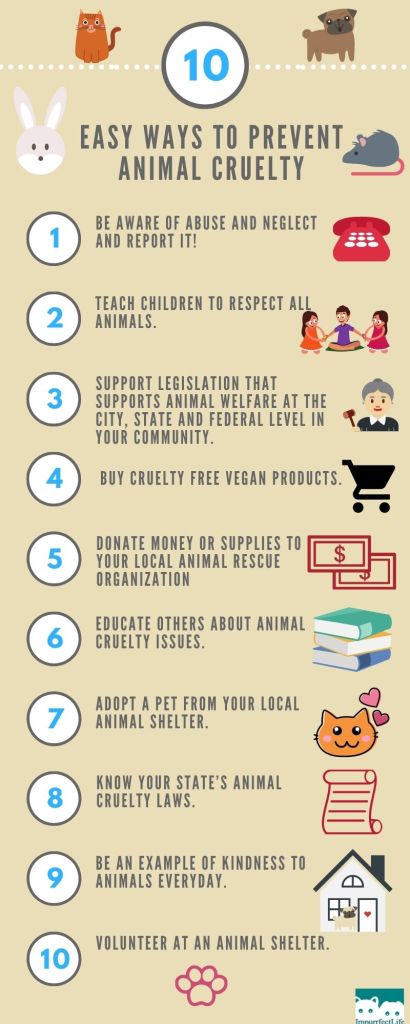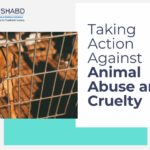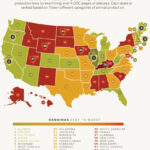In a world increasingly aware of the pervasive issue of animal cruelty, the question arises: how can we effectively reduce this abhorrent practice through education and conscientious consumer choices? This inquiry not only invites introspection but also poses a challenge for each individual to consider their role in the ecosystem of animal welfare. Education and consumerism are often underappreciated tools in the arsenal against animal cruelty, yet they wield formidable power when harnessed correctly.
To commence this exploration, one must first understand the significance of education. Education serves as the bedrock upon which all awareness and activism against animal cruelty are built. Without a basic understanding of what animal cruelty entails, and the various forms it can take, steps toward reducing it may be ineffective or misdirected. Thus, educational initiatives are paramount. They can take myriad forms, from formal classroom curricula to informal community workshops, from social media campaigns to engaging infographics designed to attract attention and incite action.
Consider the effectiveness of embedding animal welfare education into school programs. By incorporating lessons about empathy, compassion, and the ethical treatment of animals from a young age, future generations can cultivate a sense of responsibility towards all sentient beings. Activities such as field trips to animal shelters or visits from local animal rescue organizations can serve as powerful catalysts for empathy and understanding. Children exposed to these educational experiences are more likely to grow into adults who prioritize humane and ethical treatment of animals.
Moreover, the potential for community workshops cannot be overstated. These gatherings can foster dialogue about the complexities surrounding animal welfare. They can also provide essential resources, equipping attendees with the tools they need to advocate for change within their communities. Topics might include understanding local laws regarding animal protection, learning the signs of animal abuse, and understanding the importance of spaying and neutering pets to prevent overpopulation and consequent neglect.
Now, let’s pivot to the role of consumer choices in this battle against animal cruelty. Each purchase decision is fraught with implications for animal welfare. When consumers choose to support ethical brands—those that prioritize humane treatment of animals in their production processes—they are sending a resounding message to corporations: the treatment of animals matters. This concept extends beyond mere food products; it encompasses clothing, cosmetics, and a plethora of other goods.
The rise of the ‘ethical consumer’ has provided a vital lever for change in commercial practices. The public’s increasing awareness of animal welfare has fueled demand for transparency and accountability from corporations. In turn, companies are beginning to reflect these values in their policies. Brands that utilize cruel testing methods or exploit animal labor risk losing an entire customer base to competitors who advocate for humane practices.
Yet, this reliance on consumer choices poses a challenge. How do we discern which brands are truly committed to animal welfare and which are merely participating in a trend for profit? The answer lies in thorough research and skepticism. Consumers should familiarize themselves with certifications and labels that indicate humane practices, such as the Humane Society’s Certified Humane label or the Leaping Bunny logo for cruelty-free cosmetics. Armed with this knowledge, conscious consumers can make informed choices that reflect their values.
The digital age has amplified our ability to engage with these ethical dilemmas. Social media platforms can serve as powerful tools for awareness, enlightening consumers about animal welfare concerns and the companies that genuinely contribute to ethical practices. Campaigns that utilize hashtags like #AdoptDontShop or #CrueltyFree can mobilize future advocates with a sense of urgency and purpose. Sharing informative content such as infographics can help dissect complex issues surrounding animal rights into digestible formats that encourage community sharing and engagement.
As we journey through the landscapes of education and consumer choices, it is vital to acknowledge the interconnectedness of these two elements. Educated consumers are more likely to make choices that fortify humane treatment of animals. Conversely, informed choices can lead to increased awareness and understanding within broader societal contexts. This cyclical relationship, where education and consumer behavior reinforce each other, creates a robust framework for combating animal cruelty.
Furthermore, one must recognize the role of advocacy and legislation in this equation. While individual consumer choices and education are critical, systemic change can often only be achieved through legal reform. Advocacy efforts to improve animal welfare legislation require a well-informed populace. This is where the intertwining threads of education, consumer behavior, and activism converge into a singular force aimed at pushing for more stringent animal protection laws.
The imperative to act against animal cruelty is more pressing than ever. Through dedicated education—both formal and informal—and conscious consumer choices, each individual possesses the potential to enact meaningful change. The challenge before us is to recognize that every small action contributes to the larger narrative of animal welfare. Are we willing to rise to this challenge, integrating knowledge into our daily lives and making choices that reflect care and compassion for all living beings? The journey begins with you.
In conclusion, it is clear that both education and consumer choices hold tremendous potential to reduce animal cruelty. By fostering a culture of awareness, teaching empathy, and making informed purchasing decisions, we can create a ripple effect that reverberates through our communities. Every action counts, and together, we can forge a future where kindness toward animals is the norm, not the exception.








